Naturally, I am thinking of Shakespeare’s play while the ferry approaches Helsingør’s Kronborg Castle (Elsinore). The sea is frothing with Great Cormorant and Herring Gull, with more than 100 birds diving into the water. What’s that? A fin, another one. There are Harbour Porpoises right next to the ferry! They are probably hunting for herring or some other hapless little fish. Overcome with awe, I turn to Jesus…
… and I hand him my binoculars. He gets a good look of the little whales too, but everybody else on the ferry is seemingly unaware of the spectacle. Don’t people see what’s around them anymore? And how come I am traveling with Jesus?
I left you just before the Swedish wedding last time, so let’s pick up the story there. It’s the morning of the wedding ceremony and I am up at sunrise. Which is frightfully early in Sweden’s summer. My destiny for today is Kullaberg Nature Reserve. Kullaberg or Kullen are the synonyms I have come across on various websites. To stay with The Bard, a rose by any other name would smell as sweet. Kullaberg Nature Reserve, or the eBird hotspot location Kullen, is a wonderful combination of cliffs, sea, beaches, rocky shore and forests.
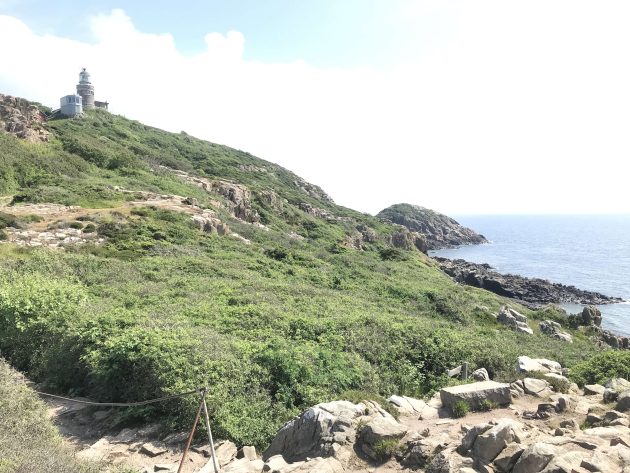
I spent some time in the reserve yesterday afternoon to find out where to go and not waste time getting lost or wandering around aimlessly. I already know that for sea-watching I need to go to the lighthouse, walk down on the right-hand side following the sign Silvergrottan to the rather luxurious viewing platform on the tip of the cape.
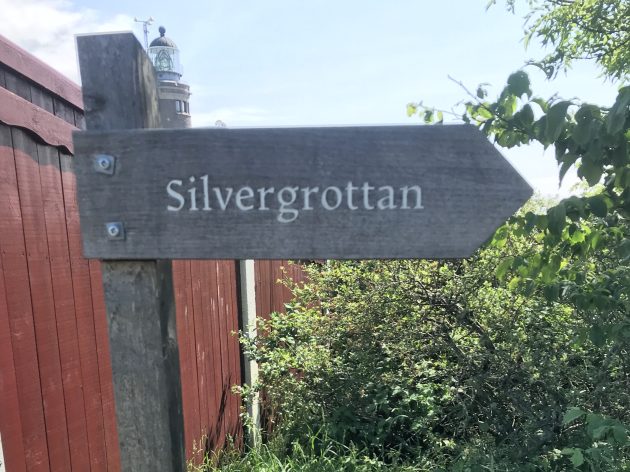
So it is this morning. I park the car and walk through a cacophony of bird song to the viewpoint. All the now familiar Swedish songbirds can be heard loud and clear. Wren, Common Redstart, Chaffinch, Blackcap, Icterine Warbler, Mick Jagger. Yes, Sir Mick’s “Pleased to meet you” rings from above: Common Rosefinch, one of my targets. I spend the next 45 minutes walking around the tree from which Mick is singing but just can’t find the bird. And the sea is waiting, so reluctantly I give up (for now) and walk on.
The platform has one well-equipped occupant when I arrive. That’s promising, but the sea is flat, which means that dynamic soaring is impossible. That rules out Manx Shearwater, Fulmar or Skua. While I continue sea-watching for Black Guillemot and Eider my Swedish co-birder keeps looking at the cliff behind us.
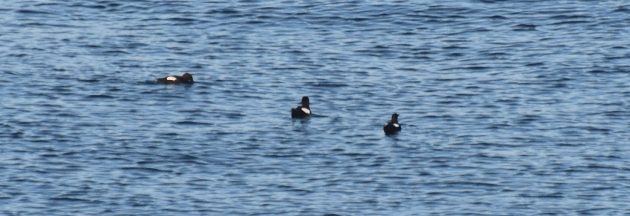
I am thinking “that is odd”, but he does have a point – during our surveillance we are seeing dozens of passerines in the cliffside shrubs. I now start following his gaze – seems like a wise thing to do. Common Whitethroat, Lesser Whitethroat, Linnet, Lesser Redpoll, Eurasian Bullfinch and White Wagtail are regular, and then there’s a Eurasian Hobby fly-by. I hear the Rosefinch again but fail to see it against the sky, so my luck hasn’t changed. Of course, nemesis no more, a Eurasian Bullfinch male is as clear as can be against the same sky.
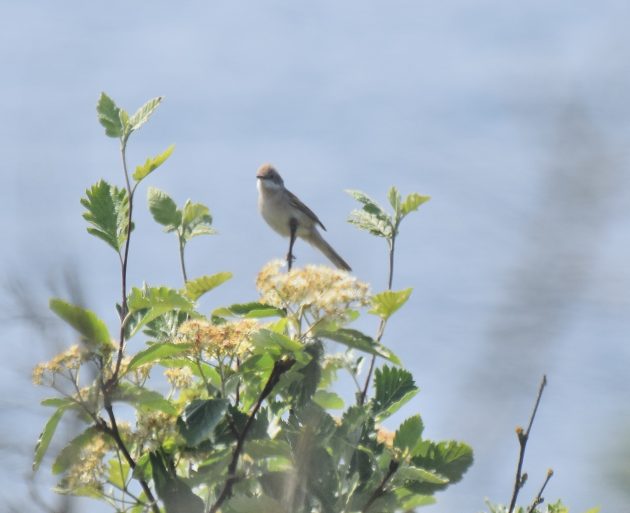
After a couple of hours without new sightings I head back to the forest. Time for another go at the Rosefinch. It takes me less than 5 minutes to find him – happily singing how pleased he is to meet me. Against the sunlight, without any visible colour… No worries, I will walk to the other side of the tree and see the bird with the sun in my back. But where’s the bird? Back down again to pinpoint it, back up for the light, nothing. Rinse and repeat many times… The height difference between the two positions is blocking the view I need. It’s there. I have seen it, I have identified it, but I still feel disappointed enough not to “tick the box” on this lifer. I sit down at the picnic tables further up, grab my breakfast from the car and while eating a banana consider my options. Hearing nothing special, I decide to stroll into the forest and after a lot of Icterine Warblers (imitating a wide range of birds – imagine a Greenshank in a tree) I stumble upon another Common Rosefinch. In full light, absolutely gorgeously crimson. When you least expect it… Some “ticks” are just so much more satisfying than others.
Time flies when birding and now I need to be driving back post-haste from Kullaberg to be in time for the wedding ceremony. The Swedish countryside is dotted with signs warning of crossing elk/moose/deer. As a kid I always felt the pang of disappointment because animals would just never jump elegantly across the road like the sign clearly promised. As an adult I learnt the signs in Africa with jumping Kudu are more truthful – I have seen that sort of showjumping happen several times. But in Europe, nothing. However, Sweden may be different after all. While rushing back, I witness a car slam into a Roe Deer just after one such road sign. A promise being kept with significant damage to the car and what appeared to be no significant injuries, fortunately. Heed those signs in Sweden – the Swedes honour their word!
Even after having slowed down, I arrive at the ceremony with time to spare and in front of Mörarp’s quaint little church I meet Jesus. Turns out he is a friend of the bride, and from Monterrey in Mexico. We chat and agree to drive together to Copenhagen the next day at noon. The mass starts, the party follows, and the rest is history. What happens in Mörarp, stays in Mörarp. Let me just say that Swedish signs need to be read carefully before you draw the wrong conclusion and get arrested.

As we will only drive to Copenhagen in the afternoon, the morning after the party offers one final birding opportunity. The nearest hotspot is Harlapps Dammar. Following the instructions it is easy to find, but note that the sign when coming from the south is hidden behind the trees. If you miss the turn-off at the yellowish house on the right, U-turn at the railway line and return. The sign on the opposite side of the road is clear to see.
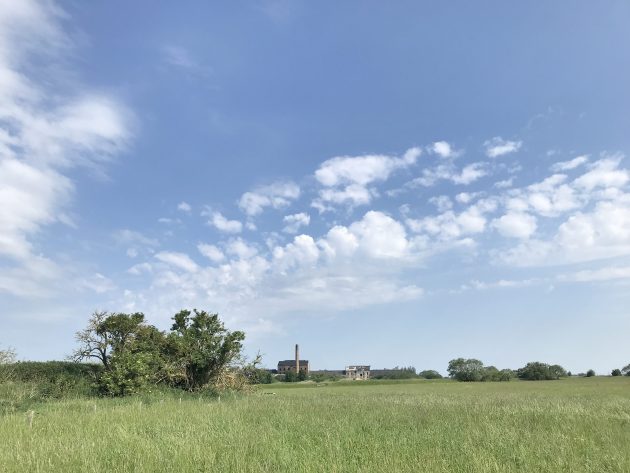
The site consists of the revitalised wastewater treatment ponds of an abandoned sugar mill with shrubs and small patches of forest. As everywhere in Sweden, the paths, the hides, the platform: it is all wonderfully designed and well-maintained. An Osprey and Skåne County’s symbol Red Kite circle around each other in the sky. There’s a Common Goldeneye mother with ducklets in tow, Red-necked Grebe, Mute Swan also with young, all the reed skulkers you can imagine. I even get to see another Thrush Nightingale.
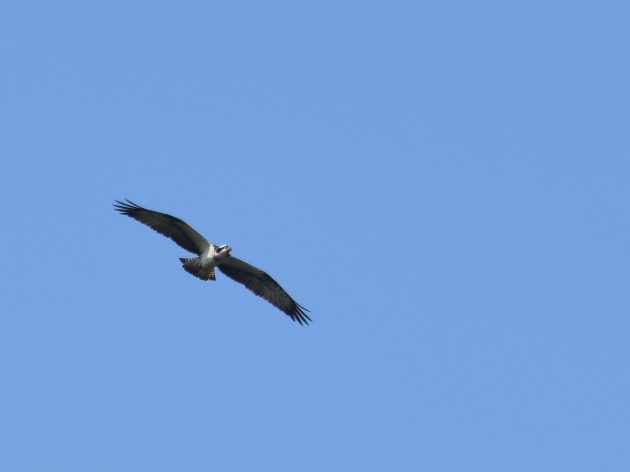
Then, reluctantly, I pack up and head for Helsingborg, pick up Jesus and head for the Copenhagen airport. To be (back) or not to be, it’s not a question.
Source link
Facebook
Pinterest
Twitter
LinkedIn

